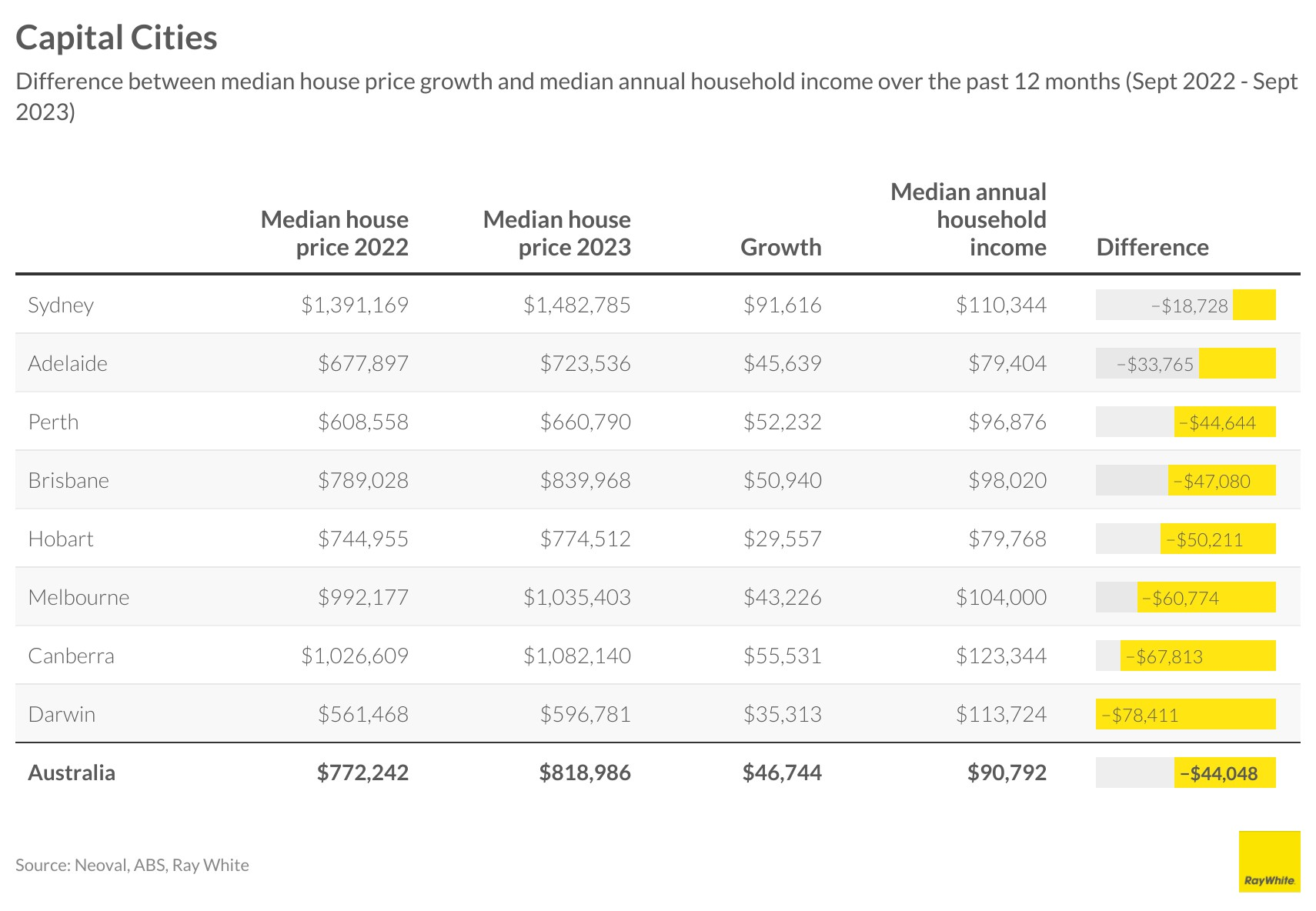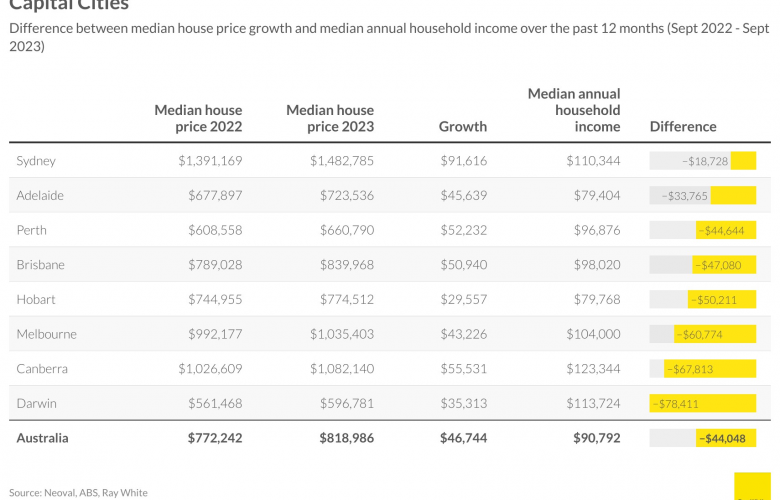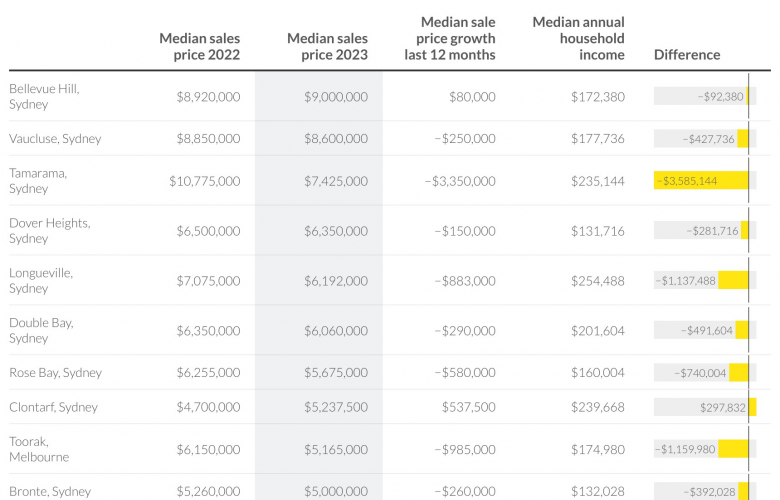Is your house earning more than you? - Ray White
Contact
Is your house earning more than you? - Ray White
Is your house earning more than you? According to Jemima White, Analyst Ray White Group, ultimately it depends on where you live.
Is your house earning more than you? Ultimately it depends on where you live. But on a macro-level, the answer has been “no” over the past 12 months for the two thirds of Australians that own their own homes. Over the past 12 months, the average income of Australian households was nearly double the increase in the median value of their homes.
Right now, the average Australian annual household income is $90,792. In comparison, Australian median house prices rose by $46,744 over the past 12 months. The average household earned $44,048 more from their incomes than from the increase in the median value of their homes. This was consistent across all capital cities. Household incomes exceeded median house price growth in all capital cities, with Sydney having the smallest difference and Darwin having the greatest.

This is almost the complete opposite of what was recorded in 2020 and 2021. As median house price growth slowed towards the end of 2021 until its trough in March of this year, annual wage growth has steadily remained around 3.7 per cent. This helps to explain why houses have generally earnt less than the income of their owners across Australia over the past year.
While the city and national averages show that people’s incomes have risen more quickly, at a suburb level, the answer is quite different.
The suburbs where the difference between house price growth and household income was greatest was primarily in New South Wales, in particular Sydney. Most notably, Cabarita’s house price growth of $842,500 is almost six times its household income of $140,140pa. Battery Point in Hobart, Leabrook in Adelaide and Warrawee in Sydney followed.
Over the past year all suburbs in the Northern Territory, except Berry Springs, saw house price growth lower than household income.
Even the homeowners in the top 10 most expensive suburbs in Australia most likely would have earnt more than their homes did over the past 12 months. All these suburbs saw house price growth lower than household income. With exception to Clontarf in Sydney’s North Shore where median house price growth was $297,832 greater than median household income. The greatest difference in Tamarama in Sydney’s Eastern Suburbs by $3,585,144.
Australian median house price growth is beginning to pick up again, currently 2.3 per cent higher than wage growth, the first time since September 2022. So it is likely that houses will go back to earning more than their owners in the year ahead.







